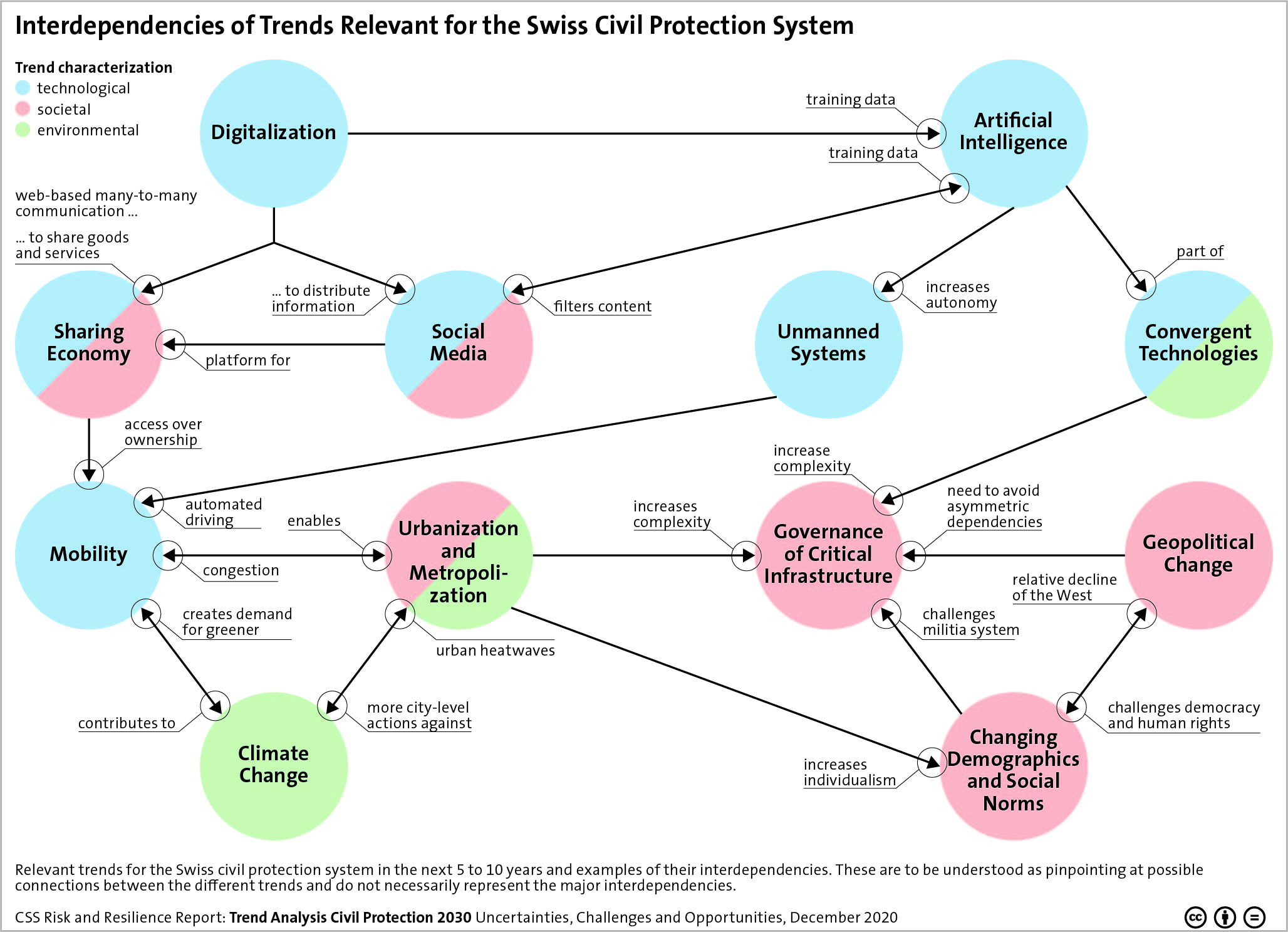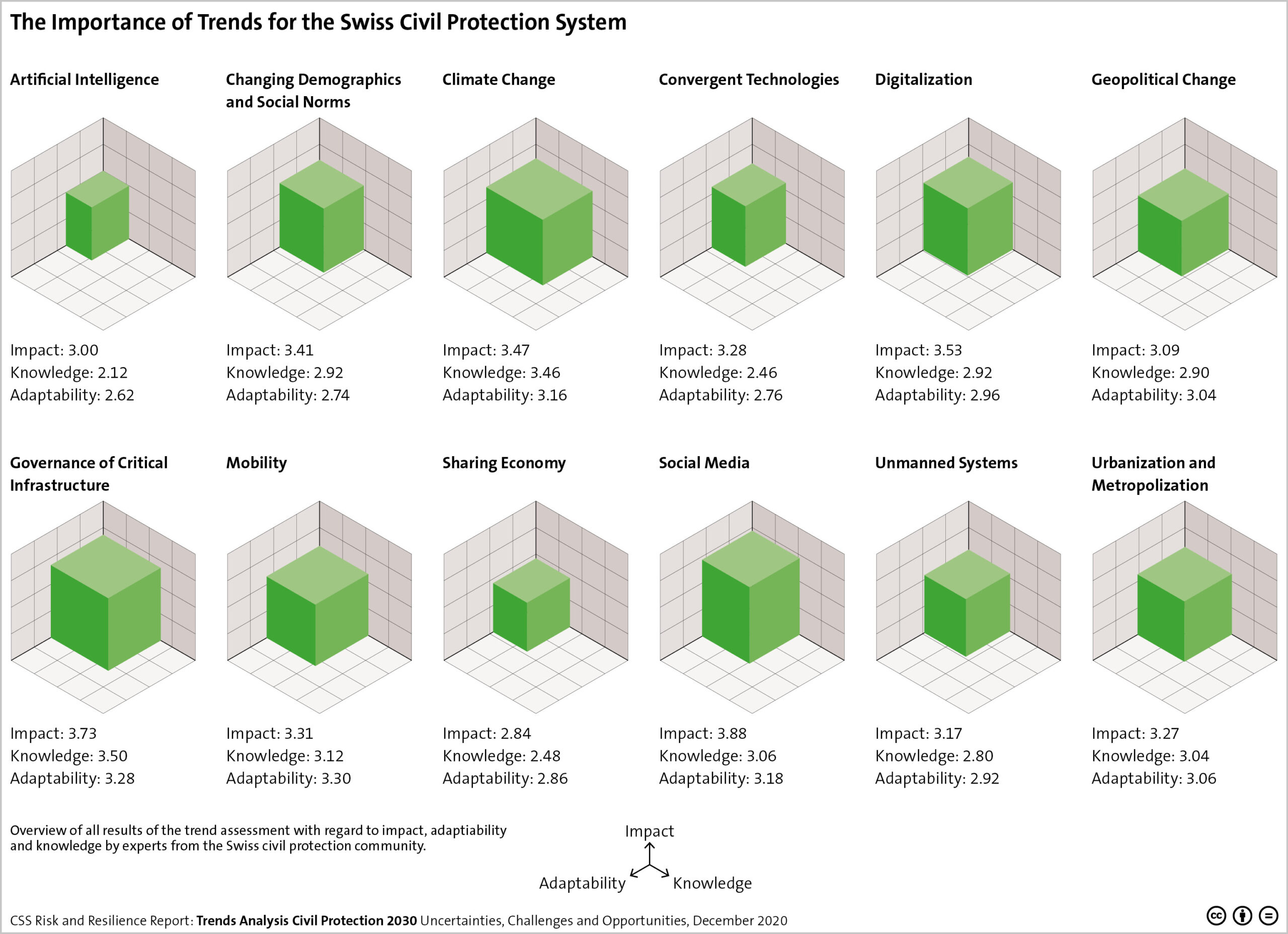
This week’s featured graphic points out the interdependencies of trends relevant for the Swiss Civil Protection System. For more on uncertainties, challenges and opportunities of trends in civil protection, read Andrin Hauri, Kevin Kohler, Florian Roth, Marco Käser, Tim Prior, and Benjamin Scharte’s CSS’ Risk and Resilience Report here.



